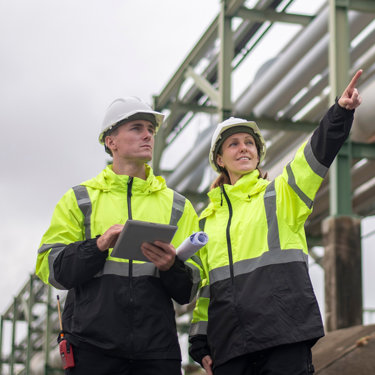Quick Guide: Water Resources Act 1991
Published: 29 March 2023 | Download Quick Guide
This Quick Guide looks at the Water Resources Act 1991, the legal implications, why it's important to act, and what you should do to apply this legislation to your organisation.
Summary
The Water Resources Act 1991 (WRA) is an Act of Parliament that regulates water resources, water quality and pollution, and flood defence.
Part II of the Act provides the general structure for the management of water resources. It sets out the main powers and duties of the water and sewerage companies, and defines the powers of the Water Services Regulation Authority (Ofwat).
The legal perspective
The Water Resources Act 1991 states that, “It is an offence to cause or knowingly permit any poisonous, noxious or polluting material, or any solid waste to enter any controlled water.”
A pollution incident caused by poorly maintained or inadequate equipment is a strict liability offence and failure to adhere to current standards is a key factor in prosecution.
Why you must act
You should maintain all your critical assets from fuel infrastructure to tanks, bunds, separators, and drainage in accordance with the relevant standards to ensure you do not fall foul of the water resources act.
You should also ensure you have the correct permits for discharging trade effluent.
The costs of failing to do this are not just environmental, but legal, financial, and reputational.
Penalties and reputational issues
If you pollute, you could get an unlimited fine (of up to 100% of pre-tax profits), go to prison for up to 5 years, or both.
You may also have to pay for the whole cost of the clean-up. There could be further costs such as paying compensation to third parties, higher insurance premiums or loss of contracts.
Practical application
Operators should ensure their equipment is compliant with the relevant standards and guidelines, including but not limited to:
- BS EN 858-2:2003
- CIRIA 736
- The Control of Pollution (Oil Storage) (England) Regulations 2001, The Water Resources (Control of Pollution) (Oil Storage) (Wales) Regulations 2016, The Water Environment (Oil Storage) (Scotland) Regulations 2006, and The Control of Pollution (Oil Storage) Regulations (Northern Ireland) 2010
What you should do
- Ensure you have an up-to-date drainage plan.
- Ensure you have an up-to-date incident response plan.
- Ensure you have a planned preventive maintenance strategy, including:
- Service and test your equipment according to their specific type and setting, using the latest technology and methodologies.
- Conduct a non-intrusive inspection to check levels and functionality of key components.
- Conduct an integrity inspection to detect internal faults.
- Ensure you keep full records of maintenance, servicing, inspection, and testing that will demonstrate you have been proactive, should an incident occur.
You can find all our Quick Guide downloads here.
Environmental compliance today, creating a sustainable tomorrow
Helping you reduce risk to the environment and your operation by managing assets compliantly while achieving commercial, ESG, and net-zero goals.
Contact our experts
